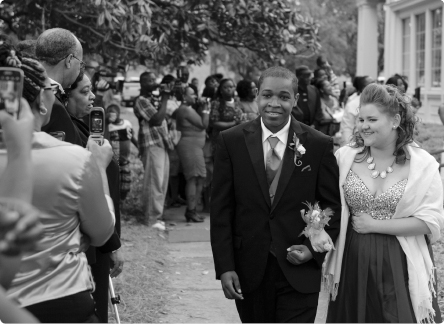Prejudice
Because people often shy away from interacting with outgroupers, they may rely on stereotypes to form judgments about them. As you learned in Chapter 3, stereotypes are a way to categorize people into a social group and then evaluate them based on information you have related to this group. Stereotypes play a big part in how you form impressions about others during the perception process. This is especially true for racial and gender characteristics since they are among the things you notice first when encountering others. But when stereotypes reflect rigid attitudes toward groups and their members, they become prejudice (Ramasubramanian, 2010).
Because prejudice is rooted in stereotypes, it can vary depending on whether those stereotypes are positive or negative. According to the Stereotype Content Model (Fiske, Cuddy, Glick, & Xu, 2002), prejudice centers on two judgments made about others: how warm and friendly they are, and how competent they are. These judgments create two possible kinds of prejudice: benevolent and hostile.
When stereotypes reflect rigid attitudes toward groups and their members, they become prejudice.
Skills Practice
Addressing Prejudice
Become a less prejudiced communicator.
- Recognize that we all have prejudices, even if they seem innocuous (as in “Men who watch football are lazy” or “Droves of teenagers at the mall are dangerous”).
- Commit to having an open mind about groups about which you hold prejudiced beliefs.
- Seek interpersonal communication encounters with members of these groups. Get to know individuals and don’t be afraid to ask questions!
- Evaluate your own communication. Do you communicate with group members in ways that set them up to confirm your prejudiced beliefs?
Question
Self-Reflection
Benevolent prejudice occurs when people think of a particular group as inferior but also friendly and competent. For instance, someone judges members of a group as “primitive,” “helpless,” and “ignorant” but attributes their “inferiority” to forces beyond their control, such as lack of education, technology, or wealth (Ramasubramanian, 2010). Thus, although the group is thought of negatively, they also trigger feelings of sympathy (Fiske et al., 2002). If you ever find yourself thinking about a group of people that you consider “inferior” but that you also think could improve themselves “if only they knew better,” you’re engaging in benevolent prejudice.

In April 2013, the students of Wilcox County High School took matters into their own hands and organized the school’s first integrated prom, overcoming the prejudice that had previously resulted in years of racially segregated celebrations.
© Maria Izaurralde/Zuma Press
Hostile prejudice happens when people have negative attitudes toward a group of individuals that they see as unfriendly and incompetent (Fiske et al., 2002). Someone demonstrating hostile prejudice might interpret the group’s supposed incompetence as intrinsic: “They’re naturally lazy,” “They’re all crazy zealots,” or “They’re mean and violent.” People exhibiting hostile prejudice often believe that the group has received many opportunities to improve (‘pret the group’s supposed incompetence as intrinsic: “They’re naturally lazy,” “They’re all crazy zealots,” or “They’re mean and violent.” People exhibiting hostile prejudice often believe that the group has received many opportunities to improve (“They’ve been given so much”) but that their innate limitations hold them back (“They’ve done nothing but waste every break that’s been given to them”).
Prejudice, no matter what form, is destructive and unethical. Benevolent prejudice leads you to communicate in condescending and disrespectful ways with others. Hostile prejudice is the root of every exclusionary “ism”: racism, sexism, ageism, classism, ableism, and so on.
However, even if you don’t treat people in a prejudiced way, that doesn’t mean you’re not prejudiced. Prejudice is based on deeply held negative beliefs about particular groups (Ramasubramanian, 2010). If you think you have prejudiced beliefs, you must confront—and permanently give up—those beliefs. How? Learn about the cultures and groups you have prejudiced beliefs about. Ask members of these groups questions about themselves, listen actively to the answers, and interact with them as much as you can. This will ease the uncertainty and anxiety you may feel around others who are culturally different from you (Berger & Calabrese, 1975).
LearningCurve